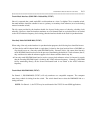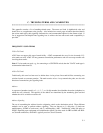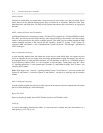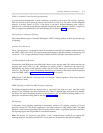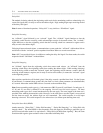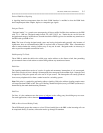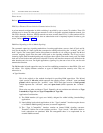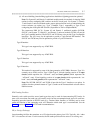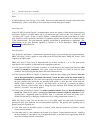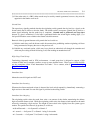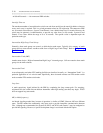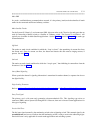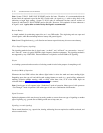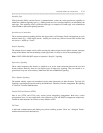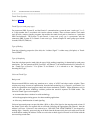TRUNKING TERMS AND CAPABILITIES C-7
_ ______________________________________________________________________________________
_ ______________________________________________________________________________________
_ ______________________________________________________________________________________
(4) All out-of-building (inter-building) applications should have lightning protection optioned.
Note: For System 85 and Generic 2 traditional module trunks, the method of selecting E&M
options involves configuring DIP switches on the SN circuit pack. For System 75, Generic
1, and Generic 2 universal module trunks, proper option selection involves administering the
correct software type option (e.g., Type 1 standard, Type 1 compatible, or Type 5) and
configuring the circuit pack DIP switches (Unprot/Prot as well as Simplex/E&M).
The DIMENSION PBX (LC11), System 85 and Generic 2 traditional module (SN232B,
SN233C), and System 75, Generic 1, and Generic 2 universal module (TN760) all provide
the Type I standard interface. The SN233C and TN760 may also provide Type I compatible
interfaces. The LC11 may also be optioned to provide a 2-pair derived DX-interface. The
SN233C and TN760 may also be optioned to provide a 2-pair SX-interface.
Type II Interface
This type is not supported by any AT&T PBX.
Type III Interface
This type is not supported by any AT&T PBX.
Type IV Interface
This type is not supported by any AT&T PBX.
Type V Interface
This method is supported by some of the later generation AT&T PBXs. However, Type V is
currently not as widely used as Type I. With Type V, M-lead signaling consists of an open
circuit (which represents the ‘‘on-hook’’ state) and local ground (which represents the
‘‘off-hook’’ state). E-lead signaling consists of an open circuit (which represents the ‘‘on-
hook’’ state) and local ground (which represents the ‘‘off-hook’’ state).
Note: The SN232B, SN233C and TN760 all provide the Type V interface as an option. In
addition, due the symmetric nature of Type V, trunks can be connected back-to-back with no
E&M converter.
ETN Trunking Facilities
Generally, each switch provides several trunk types that may be used for interconnecting ETN nodes. In
most cases, more than one trunk type will actually work, but the recommended trunk type will work best.
Depending upon the function of the ETN node (e.g., Tandem, Main, Satellite, or Tributary) and to some
extent the function of the connecting node, will determine which trunk type is recommended. See the
Trunking section of chapter 1 for ETN trunk recommendations.
FX (or Foreign Exchange)
Leased trunking facilities that terminate on a CO other than the primary local CO. Typically, this ‘‘other
CO’’ is located in a toll zone. For this scenario, the FX trunks provide toll-free access to its serving area.



